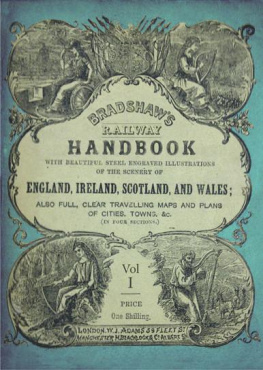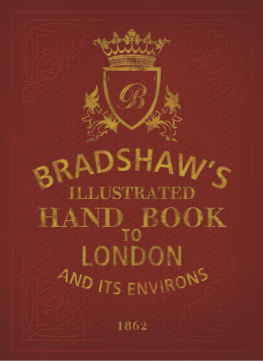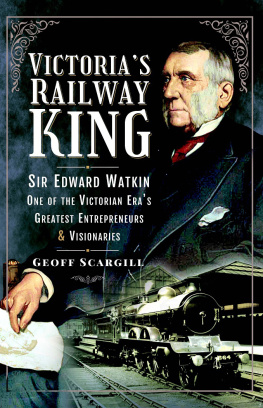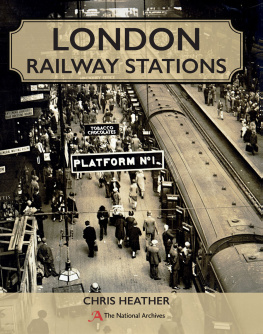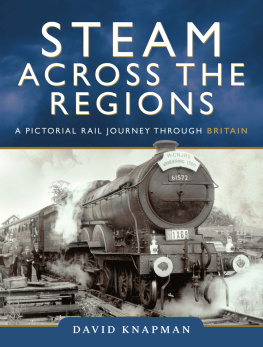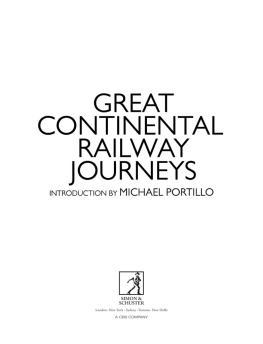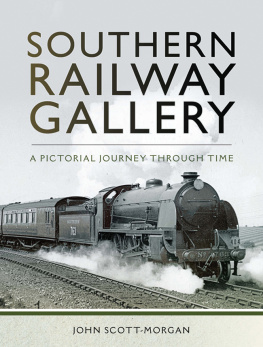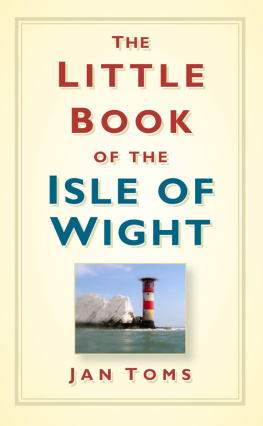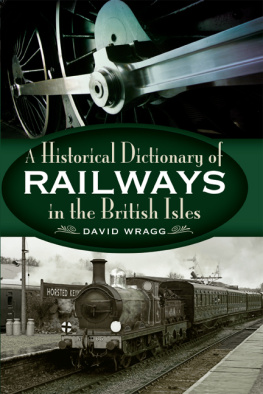
Bradshaws book for Tourists
In Great Britain & Ireland
Adapted to the Railway System
Each Section forming a Complete and Distinct Handbook
WITH
MAPS, PLANS OF TOWNS, & PICTORIAL ILLUSTRATIONS
SECTION 1.
CONTAINING A DESCRIPTIVE GUIDE
Through London and its Environs;
INCLUDING THE CRYSTAL PALACE, WINDSOR, HAMPTON COURT, ETC
AND COMPREHENSIVE HANDBOOK OF THE FOLLOWING
RAILWAYS .
Including their various branches and connexions:
SOUTH EASTERN,
LONDON, CHATHAM & DOVER
LONDON, BRIGHTON, & SOUTH COAST
LONDON & SOUTH WESTERN
INCLUDING THE
ISLE OF WIGHT AND THE CHANNEL ISLANDS
LONDON: W.J. Adams (Bradshaws guide office), 59 Fleet Street, E.C.
MANCHESTER: Bradshaw and Blacklock, 106, Cross Street
A Conway ebook
Conway 2012
First published in 2012 by Conway,
an imprint of Anova Books Ltd.
10 Southcombe Street
London W14 0RA
www.anovabooks.com
www.conwaypublishing.com
ISBN 9781844861637
CONTENTS TO SECTION I
INDEX TO STATION NAMES
ILLUSTRATIONS
MAPS:
BRADSHAWS DESCRIPTIVE RAILWAY HAND-BOOK OF GREAT BRITAIN AND IRELAND.
SECTION 1
NOTE.Within the text there are indicators on the following pages which are intended to shew the point at which a Branch deviates from the Main Line. The indicator details whether the branch lines is to the right or left hand of the railway. The termination of the Branch is also shewn.
MIDDLESEX
Is a very important inland county, containing, with the British Capital, much of the wealth and political influence of the inhabitants of these realms.
Middlesex, from its gently waving surface, is particularly suited for agriculture. For the most part, the ground rises from the banks of the Thames towards the north; and within a few miles from London, a range of gently swelling eminences, of which Hampstead, Highgate , and Muswell Hill, are the chief, protects the metropolis from the northern blasts. These heights afford many pleasing and extensive prospects; and some equally extended views may be obtained from Harrow Hill, which from rising in a sort of insulated manner, forms a prominent object for many miles around. Middlesex is a well cultivated county; the vast quantities of manure from the metropolis have been of great service in improving the land; and on this account the produce is some weeks earlier within a few miles contiguous to London, than at a more considerable distance. No important metallic strata have been discovered in any part of the county; and appearances indicate that they lie at a depth much too great to be made subject to the operations of the miner.
London

Is the capital of Great Britain, and indeed, if its commercial and political influence be considered, of the civilised world. The British metropolis, if we include its suburban districts, contains the largest mass of human life, arts, science, wealth, power, and architectural splendour that exists, or, in almost all these particulars, that ever has existed in the known annals of man-kind and in making this assertion, it should be born in mind that the power of some ancient citizens of Rome herself was relatively, but not positively greater; and that the only well authenticated superiority is that which may be traced to the architecture of a few early cities. The site of our gigantic metropolis is the very best that could have been selected for commercial purposes, as it is enabled, by means of the Thames, to carry on a water communication with every part of the globe; and not even the development of the railway system in England has lessened this advantage. The position of other great cities may indeed exhibit more striking features, but the situation of our metropolis happily combines all which may contribute to its wealth and convenience. Seated on a gentle slope, descending to the margin of a noble River , its plain is bounded on the north and south by two beautiful ranges of hills.
The growth of London to its present size is most remarkable. In 1560, Finsbury and Holborn, St. Giles and St. Martin s, were scattered villages. Westminster was not only a distinct but a distant city. A long dreary road led from Ludgate to the village of Charing and beyond this all was open field and garden.
We should far exceed our limits were we even briefly to trace the progress by which the City of London extended itself in all directions, and rapidly increased in importance and magnitude to its present position, which is solely attributable to the commercial enterprise of its inhabitants. The annual value of the exports and imports, from and into the port of London, is computed to amount to between sixty and seventy millions sterling; and articles of domestic or foreign merchandise, including cattle and provisions sent for the consumption of the inhabitants amount to the value of 50,000,000 making, with the imports and exports the sum of 120,000,000 worth of property annually moving to and from London.
The portion of this immense metropolis which is distinguished by the name of The City stands on the north bank of the Thames, from the Tower the Temple, occupying only that space formerly encompassed by the wall, which in circumference measures about three miles.
When the great fire of 1666 destroyed almost the whole city within the walls, London possessed an architect worthy of raising the fallen capital from her ashes. But the citizens rejected the beautiful plan of Sir Christopher Wren, who proposed to make St.Pauls the centre of the metropolis, and to carry spacious streets radiating in direct lines to the principal parts of the suburbs. A terrace was to adorn the banks of the river. The citizens opposed and frustrated this design, and hence the metropolis retains so many of the defects which subject London to the just criticisms of a stranger, on account of all its public buildings being huddled together in nooks and corners.
The last ten years, however, have effected many and great changes, so that much of the stock-criticism used against our metropolis is no longer applicable, and since the alterations now in progress are being made under the eyes of a travelled people, familiar with the best features in continental cities, the new erections are such as will, separately and collectively, improve London until it commands the visitors admiration equally with his wonder. When we regard the extension of the communications between the metropolis and the most distant parts of the country, and the immense number of strangers who visit London in the course of a year, we believe a short description of what there is to be seen, and how to see it, will not be the least interesting feature of this work.
VISITORS GUIDE THROUGH LONDON
If the reader be a stranger in London, visiting the great metropolis simply on pleasure, he will most probably wish to walk through the principal streets or thoroughfares first, to make himself acquainted with their peculiar characteristics, as a general basis upon which he may subsequently extend his rambles in different directions, according to the particular objects that attract him most, or the time he intends to remain. Selecting St Pauls as the starting point, the visitor can proceed eastward or westward according to his own predilections. The man of business will probably prefer a visit to the centre of our commercial emporium, the heart of London, and proceeding down Cheapside visit the Exchange and the other public buildings in the city, a description of which he will find in Bradshaws Guide to London .
Next page
